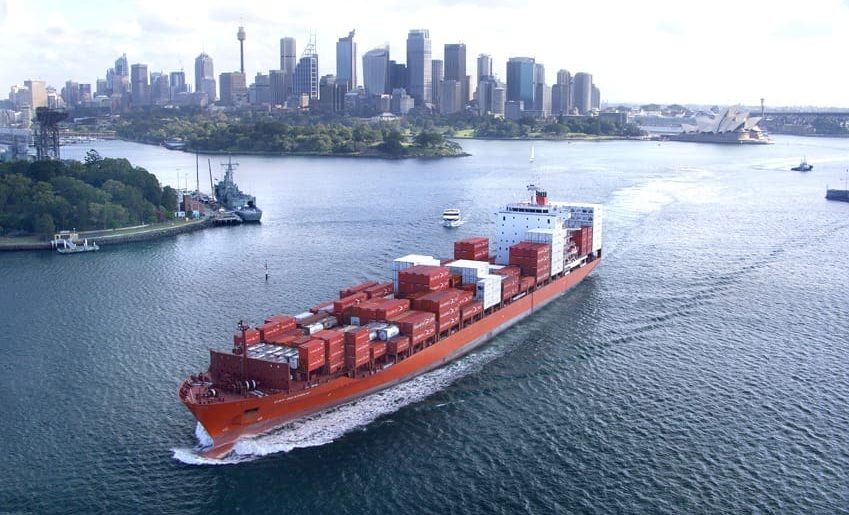
AUSTRALIAN beef exports are off to a cracking pace in 2025, with both January and February shipments unusually large.
In fact the accumulated calendar year-to-date shipments are record high, at more than 198,000 tonnes. Even the frantic herd liquidation years of 2019-20, and 2014-2015 did not come close to that number for January-February trade, with exports not exceeding 173,000t in any of those years.
For the month of February just completed, beef export volumes hit 117,502t, up 44pc on January, which is inevitably the quietest month of the year for Australian beef exports.
Last month’s figure was up 24,000t or 25pc on February last year, making it one of the biggest February shipment figures on record. Limited weather impact at a time of year that can often produce disruptions – especially in the largest beef producing and processing state of Queensland – was a factor.
No ‘shoulder period’
One of the defining features of the 2025 Australian slaughter season so far has been how quickly production has ramped-up. Historically, there is a pronounced ‘shoulder period’ during the first three or four months of the year before production levels peak. This year, February slaughter, as measured by the NLRS national weekly slaughter records, are already close to capacity, at around 145,000 head per week.
That’s inevitably provided more product for export shipments last month. However March beef exports may show some negative impact from this week’s Port of Brisbane closure since last Sunday, due to the arrival of Cyclone Alfred off the southern Queensland coast. Up to a week’s loading operations will be lost, even if the port re-opens on Sunday or Monday next week.
Labour constricting processing capacity
Processing capacity limitations due to labour challenges remains one of the key choke-points for Australian beef production and exports this year. Some processors have recently suggested that what was a ‘labour access challenge’ is in some cases turning into a ‘labour accommodation’ challenge, especially in smaller regional communities where many processors are located.
Given high profitability presently on many descriptions, most processors would be happy to handle more slaughter cattle – especially cows – at present if they had the manpower.
Expect to see more references to processing labour challenges and its likely impact on beef production this year in MLA’s upcoming 2025 Industry Projections report, due out next week.
February trade sharply higher
Most large export customers took larger Australian volumes in February, as Australian beef starts to displace more product of US origin in markets like Japan, Korea and China.
The rapid decline in cow slaughter in the US is now a key driver in demand for Australian lean manufacturing beef in the United States, with exports to US East and West Coast ports last month reaching a hefty 35,102 tonnes. More than 20,000t of that was frozen product.
Trade into the US started to take off during the back half of 2023, with December shipments last year reaching 42,158t. That was second only in monthly statistics last year to October, when a blistering 45,338t was put on the water to US customers – the highest monthly volume seen since 2014.
The void left in the US hamburger beef market is being reflected in slaughter cow prices in Australia this year, with direct-consignment heavy cows this week worth anywhere from 580c/kg dressed weight in Queensland to as much as 620c/kg in some parts of southern Australia.
Displacement was also evident last month in some other large export customer countries where US and Australian beef compete. The impact of this week’s tit-for-tat tariffs between the US and some of its largest beef and livestock trading partners is yet to be played out, but we’ll be looking for signs in upcoming monthly export reports.
China growth
Beyond the US, China jumped from fourth place among Australia’s overseas customers in January, to second in February, taking 21,373t of Australian beef. That was up 6500t or 43pc from January, and 36pc higher than February last year.
Not far behind was Japan, taking 20,115t last month, up 27pc on January, but still 15pc behind this time last year. Trade into South Korea also rose last month, reaching 17,778t, up 60pc from January and almost 4000t or 28pc higher than this time last year.
Emerging and secondary markets also showed a strengthening trend last month.
Despite uncertainties surrounding import permits for 2025, Indonesia took 5012t of Australian beef in February, following a very subdued January period, but still 79pc higher year-on-year.
The Middle East region, now dominated by cheap product out of South America, took 2604t of Australian beef in February, up 12pc on January, but down about 5pc on this time last year.
Trump’s US tariffs on Canadian beef and livestock have not yet had any noticeable impact on Canadian interest in Australian beef, with our exports to Canada last month reaching 2949t, more than double trade in January, and 9pc higher year-on-year.
Second-tier Asian markets like Thailand (1871t), Malaysia (2054t) and other Asia (including Vietnam – 1630t last month), continue strong recent trade.
Despite the Free Trade Agreement being in place for the past 20 months, the United Kingdom in February accounted for only 744t of Australian imported beef, some 88pc higher than February last year, but still insignificant in a broader export market context. The surrounding European Union region (no longer including the UK) without any trade agreement in place took 578t, about half the volume seen in February last year.
Editor’s note: Sharp-eyed readers have pointed out in the photo at the top of this page that container vessels handling beef no longer depart Sydney Harbour via the route past the Opera House and SHB, instead using the Port Botany container terminal further south. While that’s true, the photo is simply intended to be symbolic of Australian containerised beef leaving our shores for destinations overseas. Images of the Port Botany container terminal just don’t cut it.

HAVE YOUR SAY